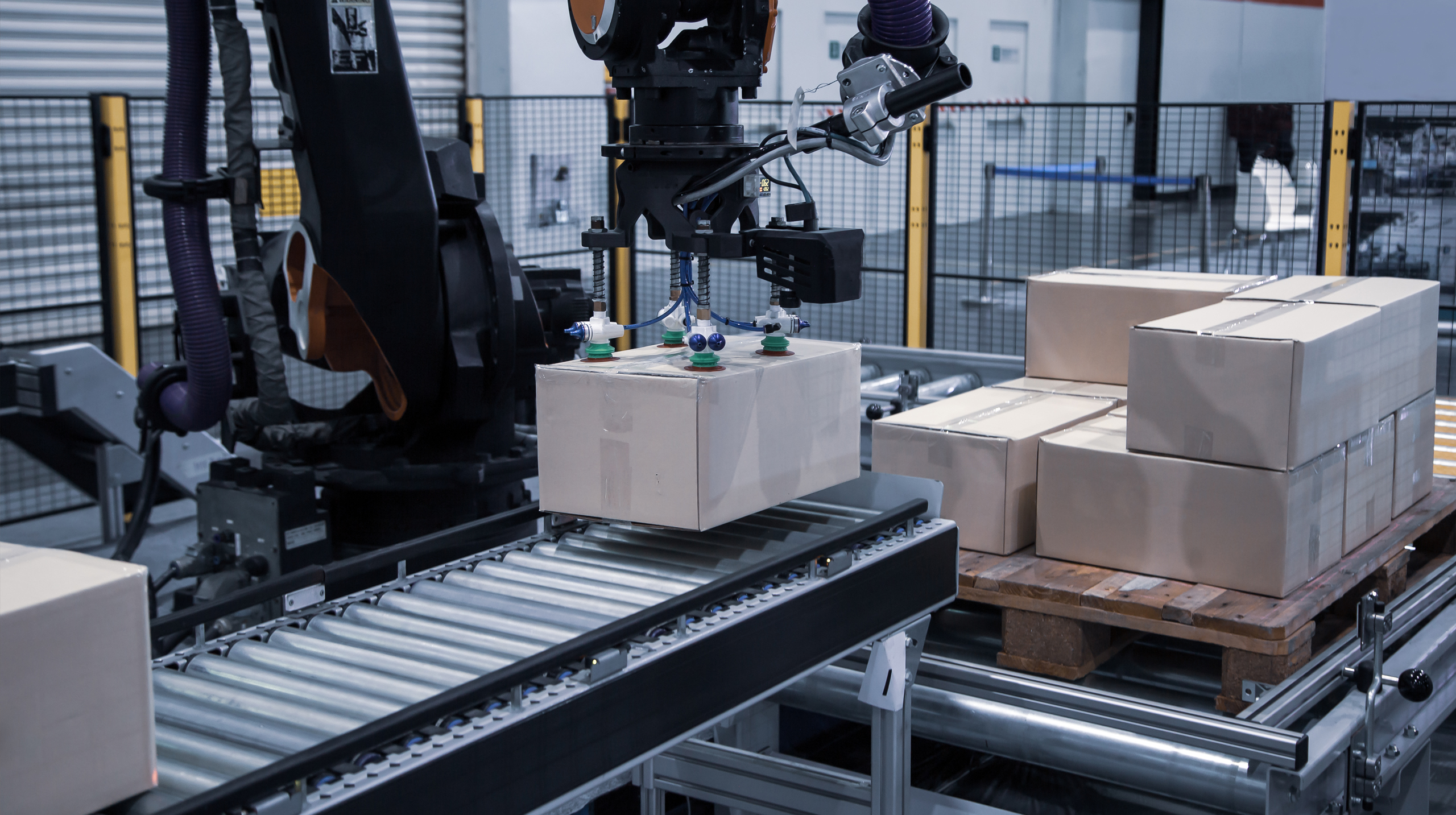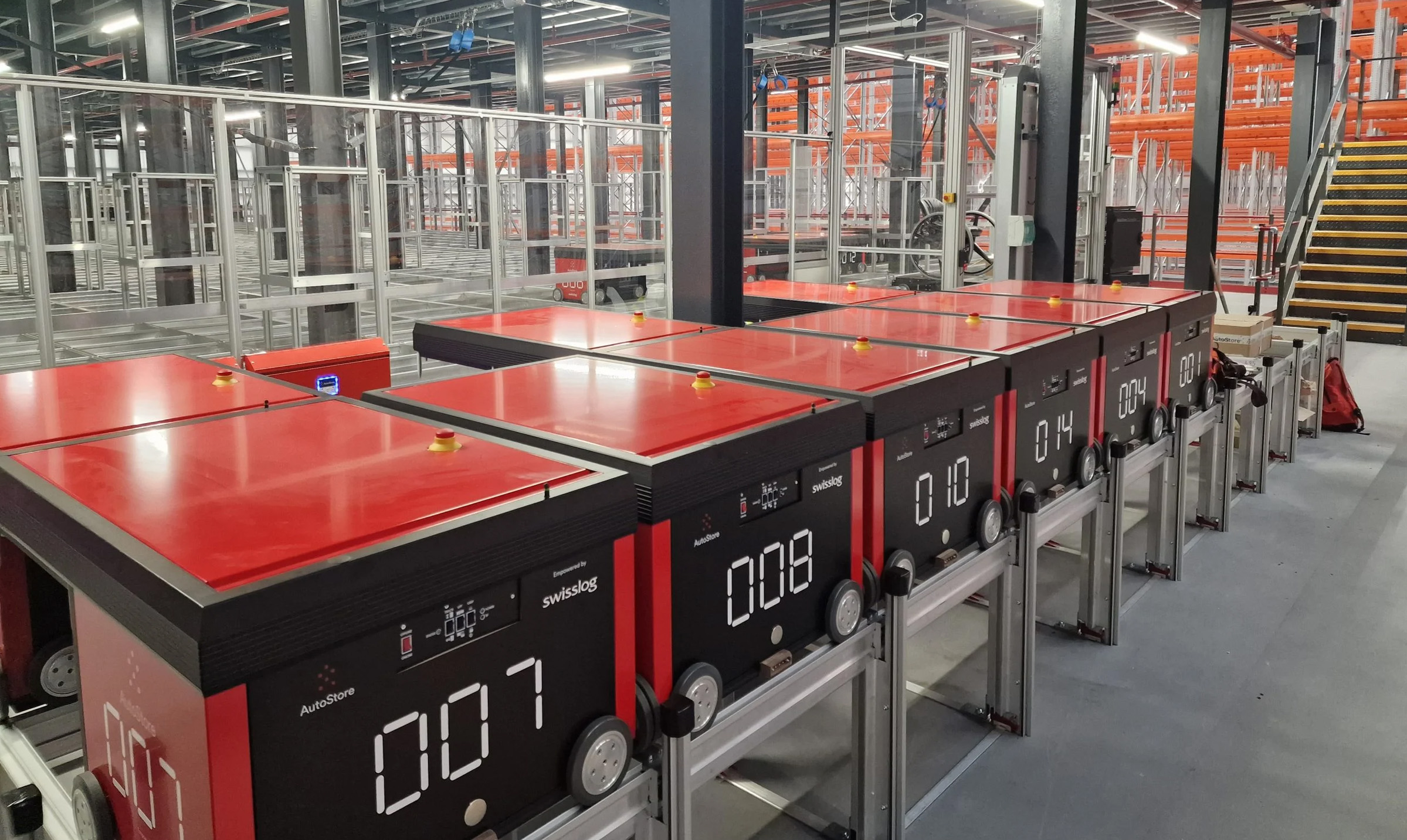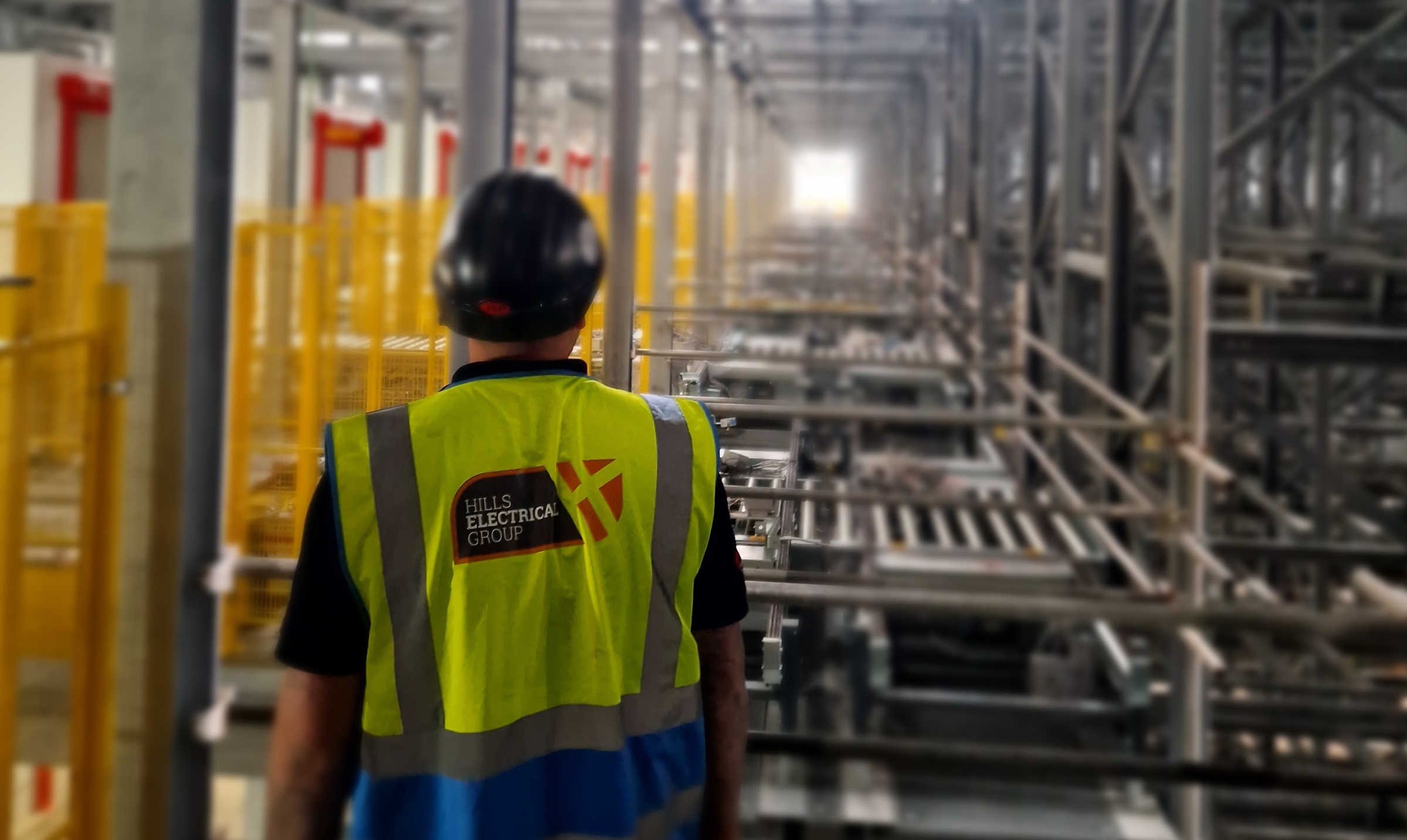DO YOU HAVE A NEW PROJECT?
Speak to a member of our team
Get in TouchLearn everything you need to know about material handling systems and how investing in one can benefit your day-to-day operations.
Material handling is an important process across many settings, including manufacturing facilities, warehouses and retail stores. However, there appears to be widespread confusion as to what this innovative automatic technology is and how it can help businesses.
Some will tell you that material handling systems move materials from one place to another others will say they protect your products. Yet, in truth, these statements are not quite right. So, let’s start by offering an accurate definition.
Screw conveyors use a rotating screw within a tube or trough to push materials from one place to another, following a horizontal, vertical or inclined path. In contrast, spiral conveyors use a traditional belt-based system to either escalate goods up or down in one twisting motion. From these two definitions, there are several distinctions you can make.
For starters, the direction in which the screw conveyor pushes a product defies all linear limits. This factor allows screw conveyor specialists such as Hills Electrical Group to create customised solutions for every possible angle.
However, the spiral conveyor is not so supple. It only lifts products vertically from one level to another, connecting overhead systems with those at ground level. To do so, the spiral conveyor uses a belt, whereas a screw conveyor uses its rotating screw thread for transportation.
Housed within a tube, the screw inside a screw conveyor goes to work within a closed-off environment. The atmosphere inside of the tube can be controlled, enabling products to be heated or dried as they move. Spiral conveyors don’t have this capability, as they carry materials out in the open.
Yet, the fly in the ointment with screw conveyors is the system can only carry liquids or small solids due to their design. With belts of all dimensions that can gently ship goods at all speeds, the spiral conveyor is much better for the careful movement of fragile cargo.
While there are a few exceptions, the different types of systems tend to fit into the following four categories:
Across each category sit many manual and automatic material handling solutions. Fortunately, more businesses are turning to the latter to lower costs, bolster productivity and protect workers from the many injuries that can be caused by physical work. With this in mind, let’s look at some of the more sophisticated solutions across each of these four fundamental categories.
This category largely centres around conveyor systems. These enable you to transform your production lines, limit heavy lifting and save time. To further improve productivity, many warehouses are installing increasingly innovative conveyor solutions, which include incline and decline, overhead and spiral conveyors. With so many options, warehouses are now able to utilise every spare inch of their facility to create the most efficient, cost-effective production line possible.
Industrial vehicles cover a wide range of material handling solutions, from trucks to pallets, cranes to hoists and everything in between. Many of these systems use assisted working equipment, so the process is only partly automated. However, new innovations are surfacing to create fully automated industrial vehicles. With drones that deliver to customers and an emerging market of automated guided vehicles, this is an exciting arena.
These automated material handling systems are designed to place and retrieve materials from predetermined storage locations within a complex warehouse. A storage and retrieval system is ideal in environments where there are major space constraints and high volumes of material constantly being moved in and out of storage. With computer controls, these systems can now work at incredible rates of speed and precision.
Automatic identification systems will recognise a product – ordinarily through a bar code or a magnetic strip – and sort the material accordingly. While this is often done manually with lasers and radio scanners, some material handling systems will automate much more of this process for you.
Although there are many different types of material handling systems, there are some common advantages and disadvantages to carefully consider before investing.
Enhance productivity – By helping to automate steps along the supply chain, material handling systems make processes much more efficient. This means that tasks get accomplished quicker and your team can do more in less time.
Improve logistics – Hand-in-hand with improved productivity comes better logistics because orders can be fulfilled faster. This can also lead to enhanced customer service.
Generate money – If you automate part of the material handling process, you can cut overheads by hiring fewer employees, fulfil more orders and grow your brand’s reputation.
Exploit extra space – Many material handling systems enable you to maximise the space of your warehouse. For example, lifts allow items to be stacked higher, while bespoke conveyors can be tailored specifically for your facility.
Limit accidents – By lowering the need for physical labour within your warehouse, you can safeguard employee wellbeing, as fewer accidents will occur.
Upfront costs – The initial costs of material handling systems will be much more than manual equipment. However, over time there’s a good chance you’ll enjoy a significant return on investment (ROI) through increased productivity and lower staffing costs.
Maintenance costs – Many sophisticated material handling solutions will require maintenance, which can be costly. But, by teaming up with a leading supplier – such as Hills Electrical Group – you’ll receive ongoing support as part of your original agreement.
Potential downtime – Breakdowns or other technical issues can always occur when working with automated machinery. This can lead to the dreaded possibility of system downtime. However, if you follow some simple maintenance advice, these incidences should be extremely rare. Again, Hills Electrical Group can help you with this.
Limited flexibility – While many specialist systems can be built with the flexibility to add future upgrades, once your solution is in place, it can be tricky to turn back. Yet, when you see how smoothly your system runs, it’s highly unlikely that you’ll want to return to a more manual approach.
At Hills Electrical Group, we provide industry-leading conveyor systems, control systems and robotics that are tailor-made to meet your material handling needs.
Simply get in touch and a member of our expert team will be on-hand to tell you exactly how we can maximise productivity, automate processes and save invaluable space within your facility.
Stay up to date by following us on LinkedIn.




Feel free to fill out our form below and a member of our team will be in touch.